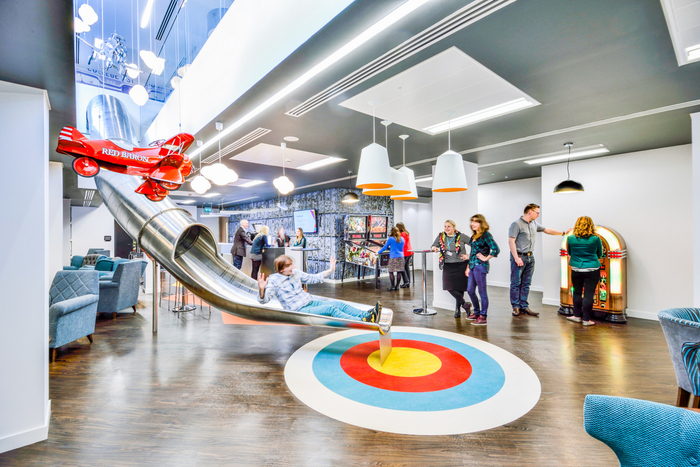
Besides the brand of a company, the quality of service supported by the metrics for sales and the quality of work through an active consumer and client base define the business.
A start-up company looking for VCs and investors or a highly-reputable multinational corporation can benefit from cohesive design elements. Highly competitive workplaces such as those in Tower One and Exchange Plaza understand that power comes from subtlety. Hence, the key to attracting power players is through office transformation. Here are some tips from modern offices:
1. Customize pieces of furniture.
Each detail in the office will not be missed by visitors – whether clients, future partners, and investors. Thus, it helps to place decorations and items in the rooms that help boost the company’s image. Large corporations such as Google (Alphabet) and millennial brands like Canva and Happy Skin transformed their workspaces according to their services and products.
Canva, a graphic design start-up based in Sydney, dwells on the creatives. Their workplace is a hipster and rustic paradise with a contemporary twist. There are chalkboards, murals, posters and an in-house chef that serves healthy meals and snacks for the happy campers. The company encourages open, collaborative spaces where people can gather and work on projects together.
Happy Skin is a high-end, local makeup brand. Its products are known for its fun and pretty packaging, so its only natural for the office to contain a combination of bright and pastel colors. The area is formal yet manages to bring out a homey feel. There’s a boudoir behind the reception which complements their brand’s identity.
Meanwhile, Google’s offices embody the idea of office-as-playground. They incorporate playful concepts inspired from their office locations. The facility in Tel Aviv, for example, has an artificial beach and indoor slide.
2. Choose furniture that is usable.
It’s important to make the office space a visual treat. However, it should still be a conducive place to work. It should be comfortable, so people get to enjoy their time at the office.
When choosing furniture, think of the building blocks. These include the chairs, tables, and desks. If you have stocks or products, you need to consider shelves and storages. Make sure these pieces of furniture are easily accessible. Using them should be hassle-free since they are used daily.
To get a grasp on what suits the workplace, you can approach the people from your staff for their opinion on the matter. Each one will have a preference of how they want their station or nook to look. Hence, you have an idea of what are their priorities regarding the look of the company they represent.
3. Make functionality and quality a deciding factor.
The idea of using a slide to go to down a floor maybe fun but reality says otherwise. Sliding through the tunnel ruins your clothes. It can wrinkle and leave marks on your designer suit. Also, people make noise when moving down which can disrupt employees nearby.
Addressing functionality makes the design work hard for you. Upon entering the Happy Skin headquarters, visitors will find two white glass cabinets in front of a stenciled Morrocan-inspired divider. Everyone who passes by can view the brand’s collection of beauty products. The encasing serves as a “beauty museum,” as the staff calls it.
Once you have a solid idea of how the workspace will be utilized, you can now decide on the materials for the pieces of furniture. Metal, plastic, and wood are standard in contemporary spaces. If you want to embody the classic and modern, you can include polished wood.
Canva makes use of natural and recycled materials. Besides the hard surfaces chained to the ceiling, it also has varnished wood tops and benches that reminds you of a day at the park. Co-founder Melanie Perkins shares they also employ glass in their design.
Taking note of these tips will help the company or business align its footing to solid ground. Interior design non-verbally communicates the ideals and goals of the firm to other parties. Moreover, ergonomically designed workspaces bring joy to the people at work. Achieving seamless yet unique and functional workplace is the key to successful image branding.